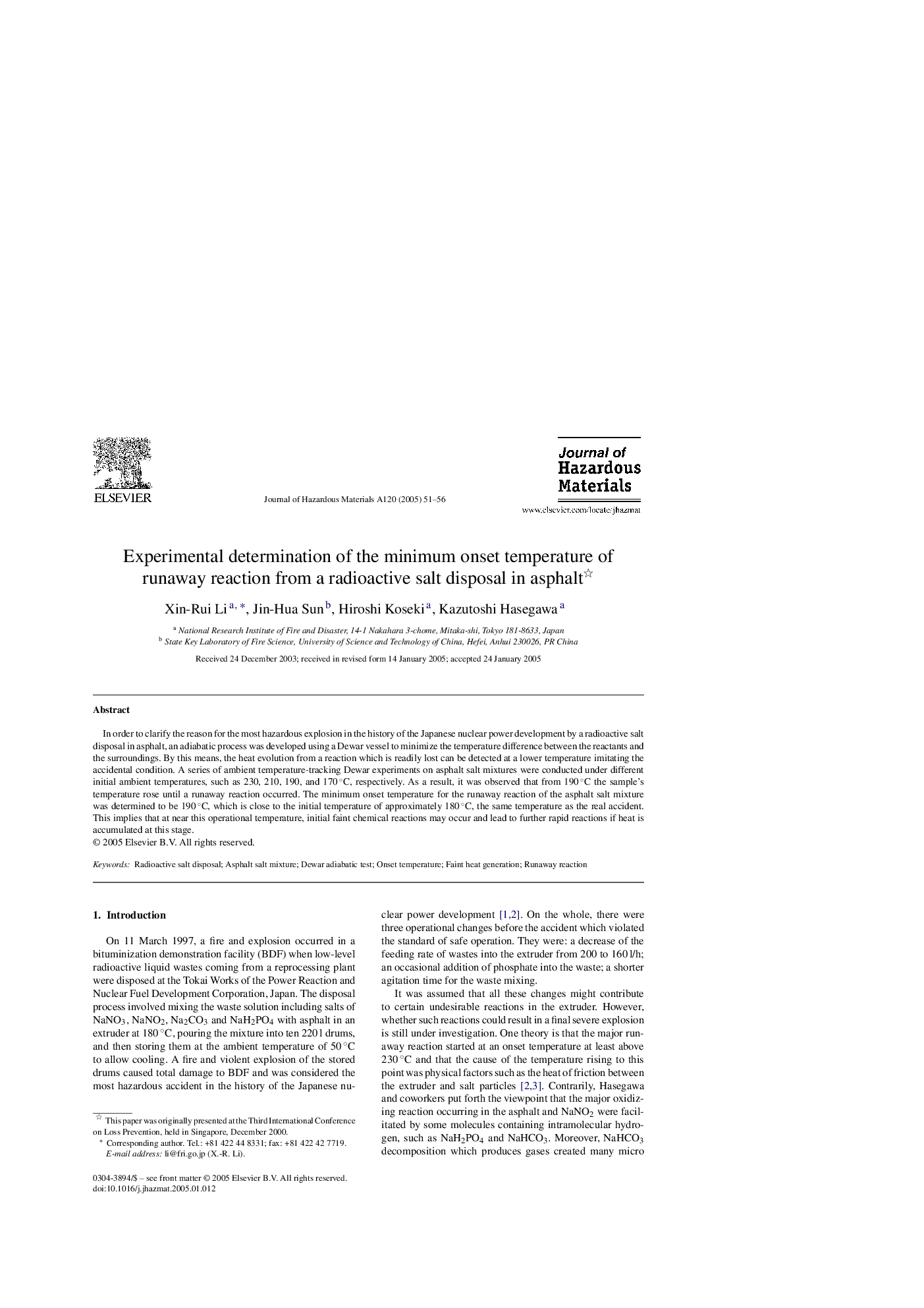| Article ID | Journal | Published Year | Pages | File Type |
|---|---|---|---|---|
| 9674301 | Journal of Hazardous Materials | 2005 | 6 Pages |
Abstract
In order to clarify the reason for the most hazardous explosion in the history of the Japanese nuclear power development by a radioactive salt disposal in asphalt, an adiabatic process was developed using a Dewar vessel to minimize the temperature difference between the reactants and the surroundings. By this means, the heat evolution from a reaction which is readily lost can be detected at a lower temperature imitating the accidental condition. A series of ambient temperature-tracking Dewar experiments on asphalt salt mixtures were conducted under different initial ambient temperatures, such as 230, 210, 190, and 170 °C, respectively. As a result, it was observed that from 190 °C the sample's temperature rose until a runaway reaction occurred. The minimum onset temperature for the runaway reaction of the asphalt salt mixture was determined to be 190 °C, which is close to the initial temperature of approximately 180 °C, the same temperature as the real accident. This implies that at near this operational temperature, initial faint chemical reactions may occur and lead to further rapid reactions if heat is accumulated at this stage.
Keywords
Related Topics
Physical Sciences and Engineering
Chemical Engineering
Chemical Health and Safety
Authors
Xin-Rui Li, Jin-Hua Sun, Hiroshi Koseki, Kazutoshi Hasegawa,
